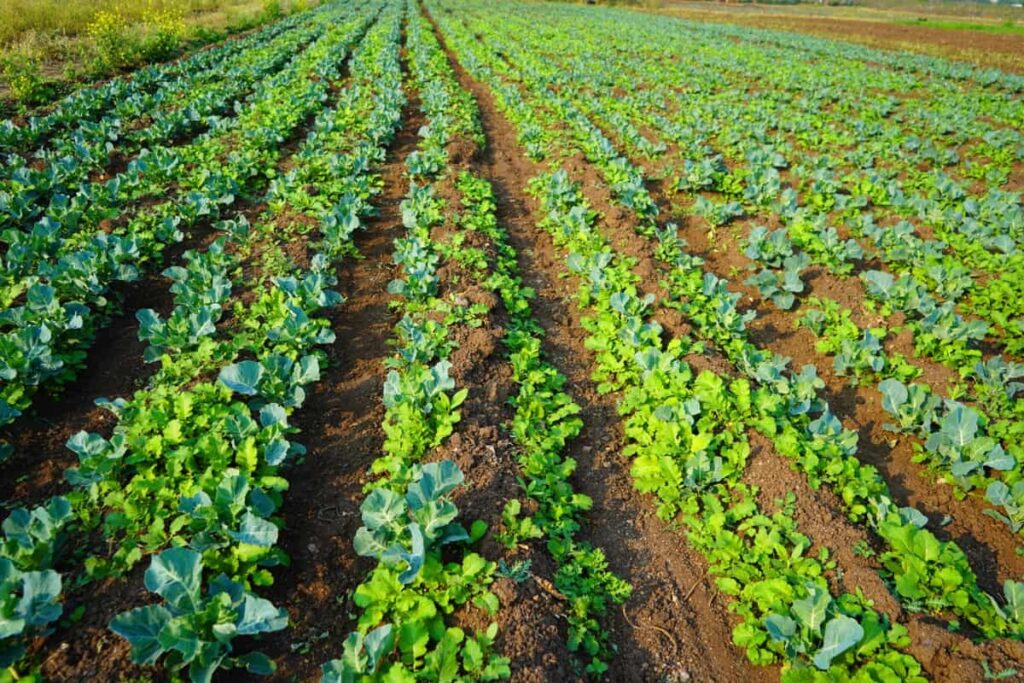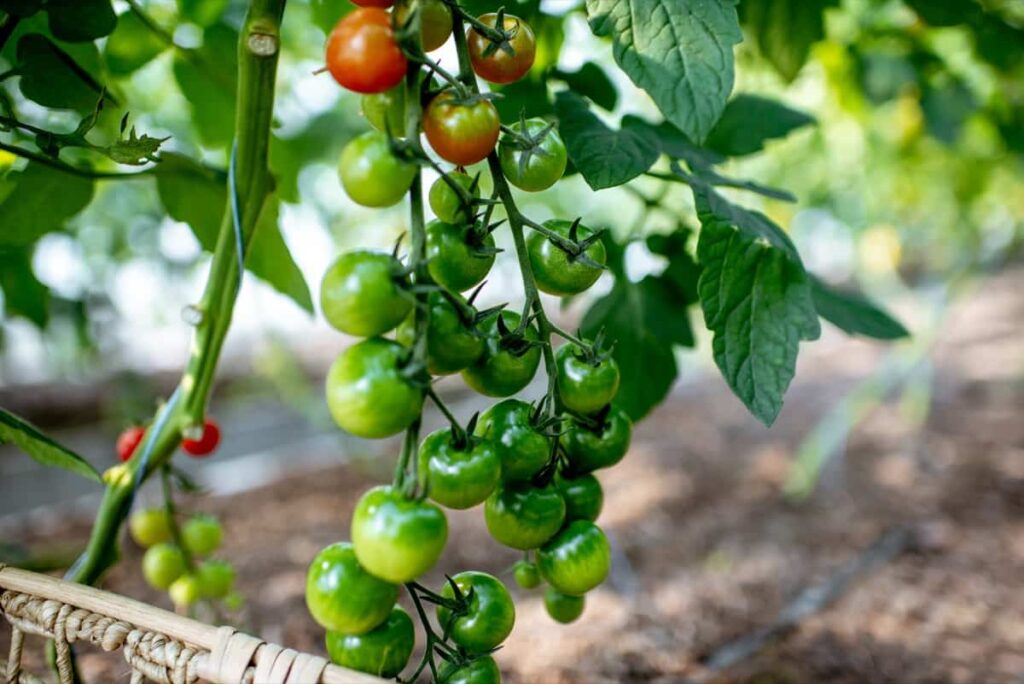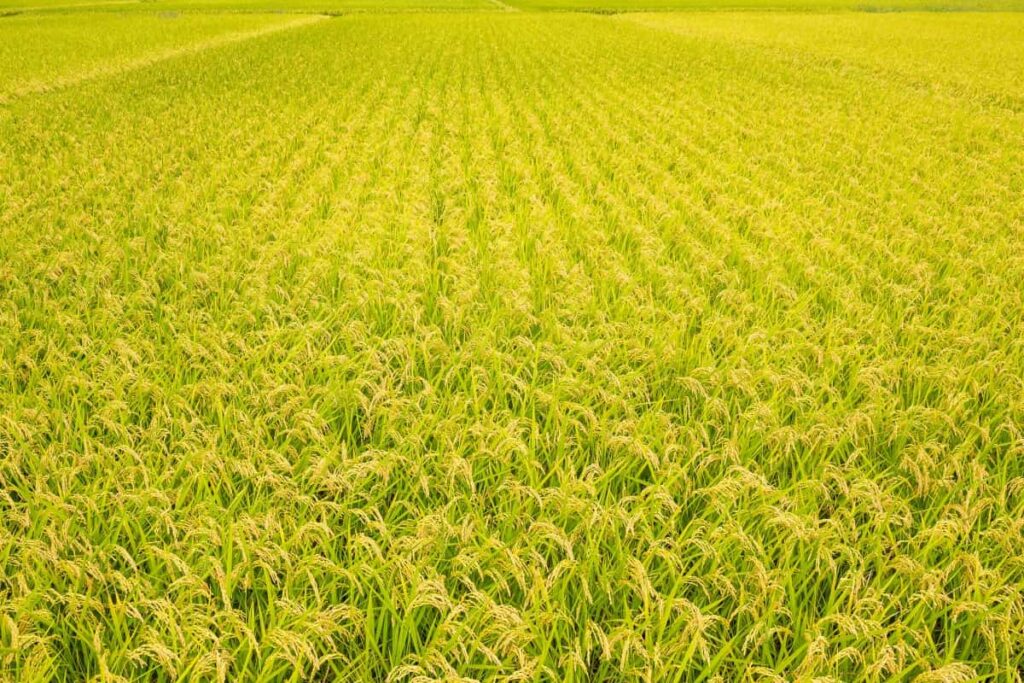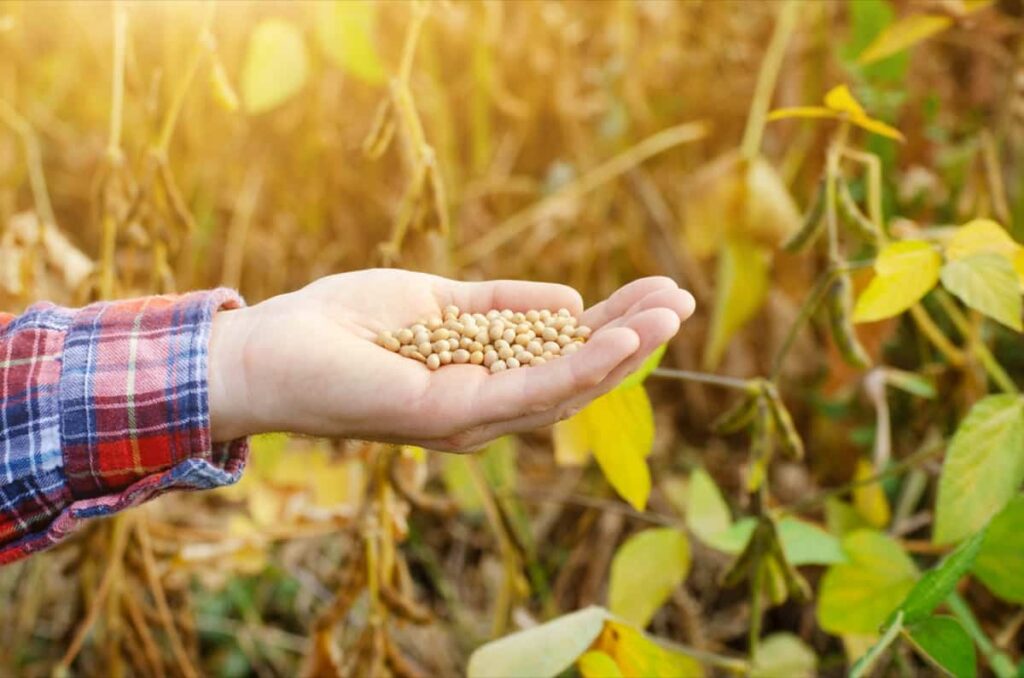Welcome to our comprehensive guide on managing organic farm operations, where we aim to help you maximize your yields and profits. This blog explores month-wise maintenance practices that can revolutionize your farm and ensure consistent success. By aligning your activities with the changing seasons and employing effective strategies, you’ll nurture healthy crops, protect against pests and diseases, and achieve abundant harvests.

Join us as we provide practical tips, expert insights, and month-wise organic farm operation management. Get ready to transform your organic farm operations and unlock the secrets to optimal performance and profitability.
What is Organic Farming?
Organic farming, also known as ecological or biological farming, utilizes organic fertilizers like compost manure, green manure, and bone meal, focusing on crop rotation and companion planting techniques. It emerged in the early 20th century as a response to changing agricultural practices. Globally, certified organic agriculture covers 70 million hectares, with Australia accounting for over half.
Today, organizations continue to advance organic farming, promoting biological pest control, mixed cropping, and insect predator fostering. Organic standards permit naturally-occurring substances but restrict synthetic ones, allowing certain exceptions like copper sulfate, elemental sulfur, and ivermectin. GMOs, nanomaterials, sewage sludge, growth regulators, hormones, and antibiotics are prohibited.
What are Organic Farm Operations?
Organic farm operations refer to the practices and activities involved in cultivating crops and raising livestock using organic methods. In organic farming, synthetic fertilizers, pesticides, genetically modified organisms (GMOs), and growth hormones are avoided. Instead, natural and sustainable techniques promote soil health, biodiversity, and environmental sustainability.
These practices include crop rotation, composting, cover cropping, biological pest control, and organic fertilizers. Organic farmers prioritize using organic-certified seeds and strive to create a balanced farm ecosystem. This approach helps to produce nutritious, chemical-free food while preserving soil fertility and protecting the environment for future generations.
Organic Farm Management Operations and Activities
Organic farm management, including soil enrichment, water conservation, temperature management, renewable energy utilization, and more. Additionally, we’ll delve into the methods and techniques in organic farming, such as crop rotation, mixed farming, optimal cropping patterns, and natural pest and disease management.
In case you missed it: How to Grow Leafy Green Vegetables in Hydroponics: A Step-by-step Growing Guide

Rain Water Conservation
- Importance of rainwater harvesting for irrigation.
- Construction of percolation tanks and farm ponds.
- Cultivation in bunds or contours to prevent water runoff.
Soil Enrichment
- Circulation of crop residues and biological waste back to the field.
- Replacing every nutrient and waste taken away from the field.
- Utilizing bio-fertilizers, compost, and organic nutrients instead of synthetic fertilizers.
Temperature Management
- The soil is covered to protect it from heat.
- Planting trees and bushes on bunds to provide shade.
Utilizing Renewable Resources
- Incorporating renewable and eco-friendly energy sources like biogas and solar energy.
- Using bullock-driven pumps and generators for machinery.
- Implementing effective crop rotation throughout the year.
Maintaining Natural Habitat
- Avoiding the use of synthetic/artificial chemicals that can harm the natural habitat.
- Promoting biodiversity and natural pest control.
Animal Integration
- Recognizing the importance of animals in maintaining soil health.
- Utilizing cow dung and poultry droppings as organic manure.
Other Techniques
- Employing vermicomposting, developing seed varieties, and producing farm compost.
- Utilizing botanical extracts and liquid manures.
Organic Farming Methods Maintenance for Better Yield and Profits
Crop Production Plan
- Organic farmers seeking certification must develop an organic crop production plan.
- The plan should include descriptions of crops, practices, inputs used, organic planting material, monitoring practices, management practices, and record-keeping systems.
Conversion Requirements
- The establishment of an organic management system requires a conversion period.
- The farm can be converted through a clear plan that covers all the requirements.
- The conversion period begins with the first inspection by the Certification Body.
- Reduction in the conversion period is possible if requirements have been met for at least three years.
In case you missed it: Growing Tomatoes Organically in Andhra Pradesh: Requirements, Planting to Harvesting Guide for Beginners

Duration of Conversion Period
- Annual and biennial crops require a conversion period of at least two years.
- Perennial plants other than grassland need at least thirty-six months of organic management.
- The conversion period can be extended or reduced based on land status and environmental conditions.
Landscape
- Organic farming should contribute to the ecosystem and promote biodiversity.
- Certain areas should facilitate biodiversity, such as extensive grasslands, pastures, meadows, orchards, hedges, and water-rich areas.
- Ecologically rich fallow land, field margins, and diverse habitats should also be maintained.
Choice of Crops and Varieties
- Certified organic seeds and plant material should be used when available and suitable for the soil and climate.
- Genetically engineered seeds and transgenic plants are prohibited.
Diversity in Crop Production & Management Plan
- Crop production should consider soil structure, fertility, and the surrounding ecosystem.
- Diversity should be maintained to manage pests, diseases, and weeds while improving soil health.
- Soil fertility can be maintained using legumes, deep-rooted plants, green manures, and crop rotation.
Nutrient Management
- Biodegradable materials from organic farms should form the basis of the nutrient management program.
- Fertilization should minimize nutrient losses and prevent the accumulation of heavy metals and pollutants.
- Non-synthetic mineral fertilizers can be used as supplementary, while synthetic nitrogenous fertilizers are prohibited.
Pest, Disease, and Weed Management
- Through preventive cultural techniques, organic farming aims to minimize losses from pests, diseases, and weeds.
- Natural methods like crop rotation, intercropping, and habitat management for natural enemies are encouraged.
- Using synthetic herbicides, fungicides, insecticides, and genetically engineered organisms or products is prohibited.
In case you missed it: Free-Range Chicken Farm Operations Management: Month-Wise Maintenance For Better Profits

Contamination Control
- Measures should be taken to reduce contamination from outside and within the farm.
- Buffer zones should be maintained to prevent contamination from conventional farms.
- Polyethylene and polypropylene coverings are allowed, but polychloride-based products are prohibited.
Soil and Water Conservation
- Sustainable practices should be implemented to prevent erosion, salination, excessive water use, and pollution.
- Burning organic matter and clearing primary forests are restricted or prohibited.
Are Organic Farms Sustainable?
Organic farming is widely considered sustainable due to its various ecological benefits. It prioritizes soil quality improvement, minimizes pollution through recycling and reduced chemical usage, promotes biodiversity in ecosystems, conserves energy and resources by discouraging excessive exploitation, employs non-chemical pest and weed management methods, and provides natural conditions to meet the needs and behaviors of livestock. These practices contribute to the long-term viability of agricultural systems and the preservation of natural resources for future generations.
Salient Features of Organic Farms
Organic farms exhibit several Silent features. It prioritizes protecting soil fertility and maintaining organic matter levels while fostering biological activity within the soil. Nutrient provision is facilitated through microbial action, and nitrogen requirements are met by incorporating legumes.
Organic farms emphasize recycling organic matter, such as crop residues and manures. Disease, pest, and weed management rely on techniques like natural predators, organic manuring, crop rotation, diversity maintenance, and cultivation of resistant varieties. Livestock management is also emphasized, addressing nutrient requirements, housing, breeding, and rearing.
Month-Wise Organic Farm Operation Management
Maintenance and operations in organic farms require month-wise planning and implementation. This includes soil testing, composting, crop rotation, irrigation, weed control, pest management, and plant health monitoring. Regular maintenance ensures the health and productivity of organic crops while adhering to organic farming principles.
January: In January, organic farms focus on planning and preparation for the upcoming growing season. Farmers evaluate the previous year’s performance, review soil test results, and update crop rotation plans. They also order seeds and plan their greenhouse activities. January is a time for repairing equipment, maintaining infrastructure, and organizing the farm for the year ahead. It’s also an opportunity to attend workshops and conferences to learn about new organic farming techniques and connect with fellow farmers.
In case you missed it: High Yield Hybrid Paddy/Rice Varieties in India: For Rabi and Kharif Seasons

February: As winter transitions to spring, organic farmers start greenhouse activities in February. They sow seeds for early-season crops such as lettuce, kale, and radishes. Farmers also continue with maintenance tasks, repairing fences, cleaning and organizing storage areas, and checking irrigation systems. Monitoring greenhouse conditions, including temperature and humidity, is important to ensure optimal plant growth. February is also a good time to attend agricultural events and expand knowledge about sustainable farming practices.
March: March marks the beginning of the growing season for many organic farms. Farmers start preparing the soil, removing weeds, and adding organic amendments such as compost or manure. Transplants for crops like tomatoes, peppers, and eggplants are started indoors. March is also a time for pruning fruit trees, monitoring pests, and implementing pest control strategies. Depending on the climate, Farmers may begin directly sowing cool-season crops in the field. It’s crucial to monitor weather conditions and protect tender plants from frost.
April: Organic farmers focus on transplanting seedlings into the field in April. They continue with soil preparation and weed control measures. April is a busy month for seeding cool-season crops like peas, carrots, and beets directly into the ground. Farmers also monitor for pests and diseases and implement organic pest management techniques. Paying attention to irrigation needs is important as the weather becomes warmer. April is a time to monitor crop progress and make adjustments to ensure healthy growth.
May: May brings warmer temperatures, and organic farms are in full swing. Farmers continue transplanting and directly seeding warm-season crops like corn, beans, and cucumbers. Weeding and pest management activities intensify, as does irrigation management. May is a critical month for crop monitoring, ensuring plants are healthy and addressing any issues promptly. Farmers may also start harvesting early-season crops like lettuce and spinach and marketing and selling produce at local farmers’ markets or through CSA (Community Supported Agriculture) programs.
June: June is a busy month for organic farmers as crops grow vigorously. They focus on weed control, ensuring crops have adequate space and nutrients. Farmers continue with pest management strategies, using companion planting and biological controls. June is a time for monitoring irrigation needs, especially during dry spells. Harvesting intensifies with abundant crops like tomatoes, zucchini, and berries. Farmers may also participate in farm tours and educational events to showcase their organic practices.
July: Organic farms are at the height of summer production in July. Weeding, irrigation, and pest management efforts continue. Farmers pay attention to disease prevention and may use organic fungicides when necessary. July is a month for harvesting various fruits and vegetables, including peppers, melons, and potatoes. It’s also an excellent time for preserving surplus produce through canning or freezing. Farmers engage in farm-to-table events and collaborate with local chefs to promote their organic products.
August: August is a time of abundance in organic farms. Harvesting and processing of crops are at their peak. Farmers continue with weed management, harvesting ripe fruits and vegetables, and preparing fields for fall crops. August is a month for preserving and storing produce for the winter months. Farmers may also start planning cover crops to improve soil fertility and control erosion. Maintaining a balance between farm work and self-care is essential during this busy period.
September: September marks from summer to fall on organic farms. Farmers focus on preparing fields for fall and winter crops, incorporating cover crops and organic amendments into the soil. September is ideal for sowing cool-season crops like spinach, lettuce, and radishes. Weed control measures are essential to ensure the success of these crops. Farmers also start harvesting late-season crops, such as pumpkins and squash. It’s a month to evaluate the growing season and plan for the following year.
October: In October, organic farmers prioritize fall harvests and preparing the farm for winter. They continue harvesting late-season crops, drying herbs, and storing root vegetables. Farmers plant cover crops to protect and enrich the soil during winter. October is a time for cleaning and maintaining farm equipment, repairing structures, and organizing storage areas. It’s crucial to prevent pests and diseases from overwintering and prepare the farm for colder temperatures.
November: November brings colder temperatures, and organic farms enter the quieter period of the year. Farmers focus on cleaning up fields, removing crop residues, and composting organic matter. They may also perform infrastructure repairs, construction projects, or barn maintenance. November is an opportunity to reflect on the year’s successes and challenges and plan for the upcoming year. During this downtime, farmers may attend workshops or educational programs to expand their knowledge.
In case you missed it: Month-Wise Vegetable Farming Operations: Management and Maintenance for Better Yields and Profits

December: December is a time for rest and reflection on organic farms. Farmers take a break from fieldwork and use this period to attend conferences, workshops, or farm tours. They reflect on the previous year, analyze crop yields and financial records, and make adjustments for the future. December is also a time for strategic planning, setting goals, and ordering seeds and supplies for the next growing season. It’s important to prioritize self-care and spend time with family and loved ones during this month of rejuvenation.
Conclusion
Efficient management of organic farm operations through month-wise maintenance is crucial for achieving better yields and profits. By following a well-planned schedule and implementing appropriate practices, organic farmers can optimize their production, ensure sustainability, and enhance profitability in the long run.
- Rosecoco Beans Farming in Kenya: Tips for Cranberry Beans Cultivation
- Why My Moringa Pods Are Underdeveloped and Are Drying: Reasons and Solutions
- How to Choose the Right Liquid Fertilizer for Your Flowers
- Sustainable Manure Management and Composting
- Water Usage Efficiency: ZBNF vs. Conventional Farming
- Goat Farming Business Plan: 10 Key Points to Consider
- How to Make Your Sheep Gain Weight in 3 Months
- How to Start a Terrace Garden in Hyderabad: Best Tips for Beginners
- Comparative Yield Analysis: ZBNF vs. Conventional Farming
- Ultimate Guide to Commercial Tulip Farming: Cultivation Tips for Beginners
- Bridging the Technology Gap: HELIOT Systems Transforming Agriculture for Small and Marginal Farmers
- How to Grow Fig Trees in Containers: A Comprehensive Guide
- How to Prevent Fruit Split in Pomegranates: Effective Tips for Beginners
- Natural Farming for Livestock: Effective Practices for Beginners
- Ultimate Guide to Growing Currants: Tips for Successful Red and Black Currants Farming
- How to Boost Bottle Gourd Flowering and Yield
- A Step-By-Step Guide to Organic Papaya Farming
- Step-By-Step Guide to Hazelnut Farming: Cultivation Guide for Beginners
- Pruning and Training Techniques for Gourds
- Pollination Strategies for Better Fruit Set in Plants: A Beginners Guide
- How to Convert Existing Drip to Sprinkler Irrigation: A Beginner’s Guide
- Reasons for Papaya Tree Leaves Turning Yellow: Solutions Explained
- Why is My Bonsai Tree Dying: Reasons and Solutions
- Natural Farming Techniques for Beginners
- Why is Citrus Tree Leaves Turning Yellow: Reasons and Solutions
- Cultivator Uses in Agriculture: A Beginners Guide
- Modern Irrigation Methods in Agriculture
- How I Make My Peppers Grow Faster: A Comprehensive Guide
- Crops Grown in Summer Season: Best Choices for Summer Gardening
- Organic Pest Control for Tomato Farming
- How to Maximize Sheep Farming Profit
- Broccoli Varieties: Choosing the Right Cultivars for Your Farm
- How to Raise Pigs in Your Own Backyard: A Comprehensive Guide
- Budget Friendly Sheep Shed Ideas: Cheap and Low-Cost Tips
- How Much Do Cattle Farmers Make: Revenue Streams in Cattle Farming
- Management Pests and Diseases in Your Cotton Field
